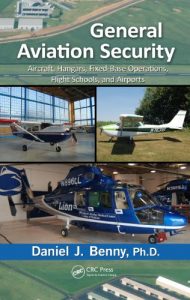After 9/11, the initial focus from the U.S. government, media, and the public was on security at commercial airports and aboard commercial airlines. Soon, investigation revealed the hijackers had trained at flight schools operating out of general aviation airports, leading to a huge outcry by the media and within the government to mandate security regulations for this flight sector. General Aviation Security: Aircraft, Hangars, Fixed-Base Operations, Flight Schools, and Airports examines the threats against general aviation (GA) and presents resources for security professionals and GA airport owners and operators to develop an impenetrable airport and aircraft security plan.
Following an overview of general aviation and its inherent security threats, the book explores:
- Physical security for the aviation environment, including intrusion detection systems, cameras, locks, lighting, and window security
- The security force, including recruitment and training
- Security of general aviation aircraft and airports, including runway security and fuel storage
- Airport safety regulations such as the Workers Protection Act and the Bloodborne Pathogens Act
- Emergency response to a range of scenarios, including medical emergencies, fires, gas leaks, and bomb threats
- The security of hangars, fixed-base operations, and flight schools
- Corporate aviation security departments
The book concludes with a study involving the Aircraft Owners and Pilots Association (AOPA) Airport Watch Program and the Transportation Security Administration (TSA) security requirements and recommendations for general aviation.
General aviation supports public safety, business, agriculture, commercial airports, aeronautical education, and many aspects of the aviation industry. The book is the first to explore the unique security concerns relevant to general aviation operations.
Dr. Daniel J. Benny was interviewed on video by General Aviation Security Magazine about his article concerning the effects of the Airport Watch Program.



